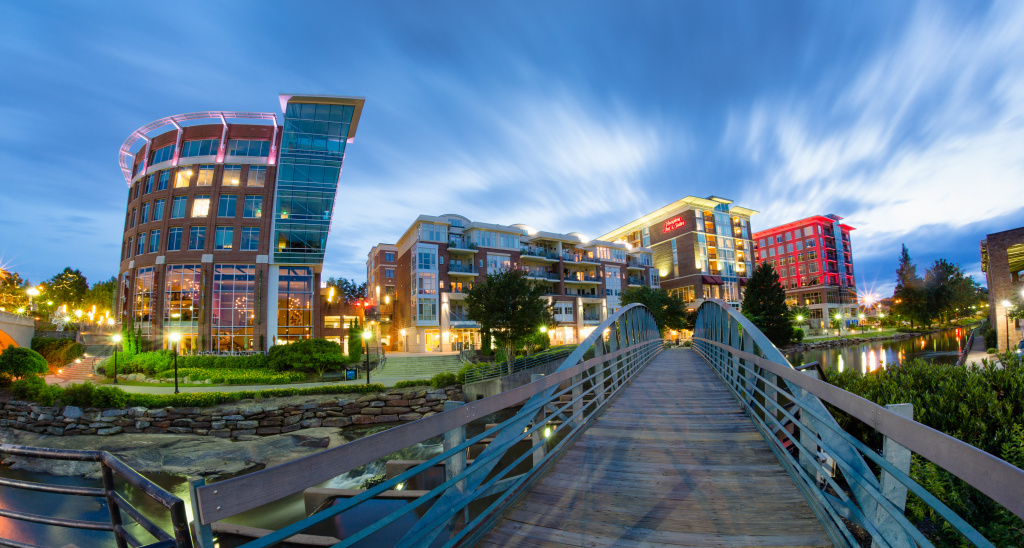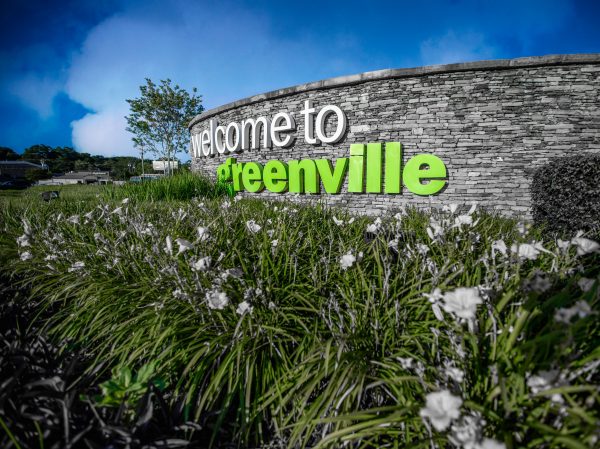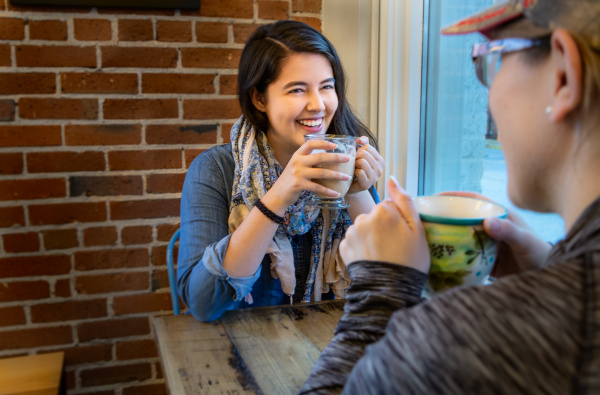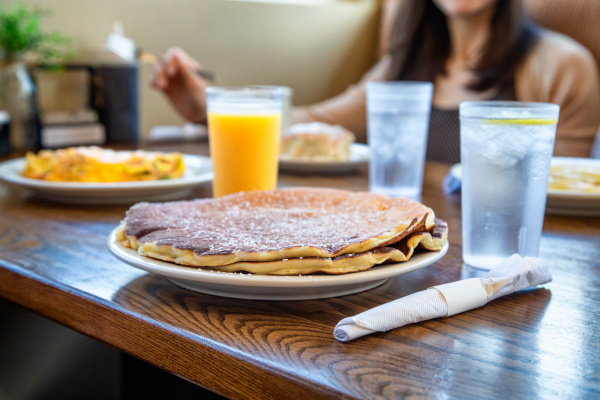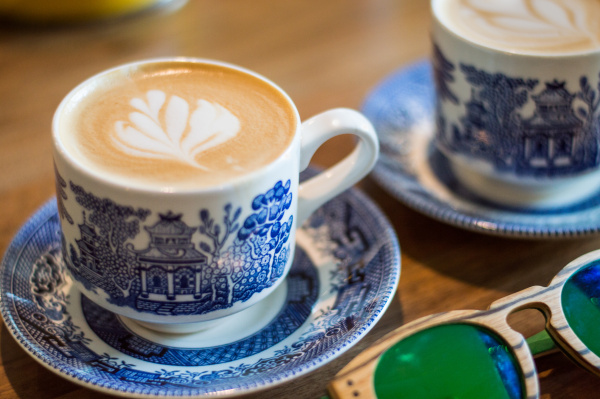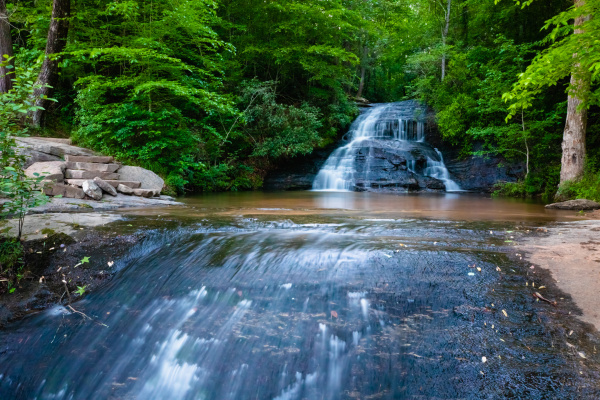Revitalizing downtown Greenville, the textile town in the Blue Ridge foothills, was not easy. During the ’50s, while the nation experienced post-war prosperity, downtown Greenville had deteriorated. Why? New arrivals—the automobile industry, suburban malls and imported textiles—had replaced Greenville’s textile industry.
The textile industry fought to keep its hold on the downtown ghost town. But the industry’s “this town ain’t big enough for the two of us” mindset only continued to choke the life out of downtown. Only a scattering of people was ever seen walking downtown. But from this deterioration emerged a mission—bring the people back. The method—revitalize downtown Greenville.
35 Years of Revitalizing Downtown Greenville
Main Street
First, Greenville needed to make Main Street for people, not cars. Under Mayor Max Heller’s leadership, plans for Main Street’s beautification began. Work was underway in August 1978. Main shrank from four lanes to two to make room for widened sidewalks, trees and diagonal parking. These changes set downtown on the path to success. By June 1980, the people were the main part of Main Street. All Main needed were attractions to keep the people coming back.
Greenville Commons
Greenville Commons—now NOMA Square—opened next in 1982. It gave Main Street an office building and the Hyatt Regency convention hotel. NOMA Square continues to draw attention with retail, restaurants and a city-central plaza. Indoor Christmas trees by winter and outdoor street festivals by summer make the complex a hub for festivities.
The Peace Center
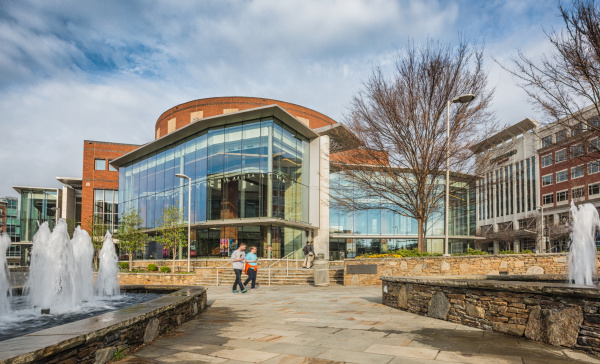
Photo by Derek Eckenroth
The Peace Center—named for a family that donated $10 million to the project—helped revitalize downtown Greenville in 1991. This multi-building complex constantly attracts the community. Many artists perform at the center, from local groups to visiting Broadway musicals.
BJU music students (literally) played a part in its official opening in November 1990. Alumnus Ed Flower recounted, “A Peace Center representative asked for four BJU band members to play at the Founder’s Gala. As donors of $25,000 or more walked down a red carpet, I and three other students honored the donors with trumpet fanfare.” At the opening concert, another BJU student performed a piano concerto with the Greenville Symphony Orchestra.
In 2010 renovations to the buildings and plaza continued to revitalize downtown Greenville.
West End Market
Following the Peace Center, the West End Market opened in 1995. The market brought a new set of attractions to Greenville. Retail, restaurants, offices, artisans and a farmers market brought life back to the deserted cotton warehouse.
BI-LO Center
In 1998, the BI-LO Center—renamed Bon Secours Wellness Arena in 2013—replaced the aging Greenville Memorial Auditorium. The new center continued to host pop culture concerts and sports games. Today, monster truck rallies and Greenville Swamp Rabbit hockey games also draw crowds downtown.
Poinsett Hotel
The Poinsett Hotel, originally opened in 1925, was restored and renamed the Westin Poinsett in 1999. Because the hotel was empty 1986–1997, restoring it was crucial to revitalizing downtown Greenville. The restoration made the hotel an attraction again, both inside and out.
The Westin Poinsett stands alongside the Old Greenville County Courthouse, now a bookstore. On the other side of brick-paved Court Square, the Liberty Building—formerly the Chamber of Commerce Building—completes the stately trifecta.
Falls Park and Liberty Bridge
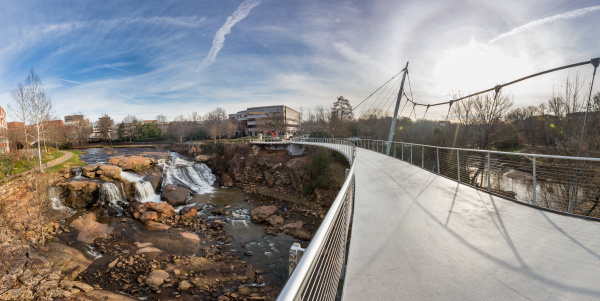
Photo by Derek Eckenroth
Falls Park draws residents and visitors downtown. Unlike other Main Street attractions, the falls were already part of downtown. Greenville’s natural focal point just needed some attention to highlight its beauty.
The unsightly Camperdown Way Bridge obscured the falls with its thick road and pillars that crossed the river. After removing the concrete bridge and clearing the vines in 2002, park construction began. By 2004, the park was completed along with a new suspension bridge for pedestrians.
The river now brings the city together as it did the textile community years ago.
Fluor Field
In 2006 Fluor Field—originally West End Field—extended attraction to the far end of Main Street. It is home to the Greenville Drive minor league baseball team. Fundraisers and festivals also take place at the field.
RiverPlace
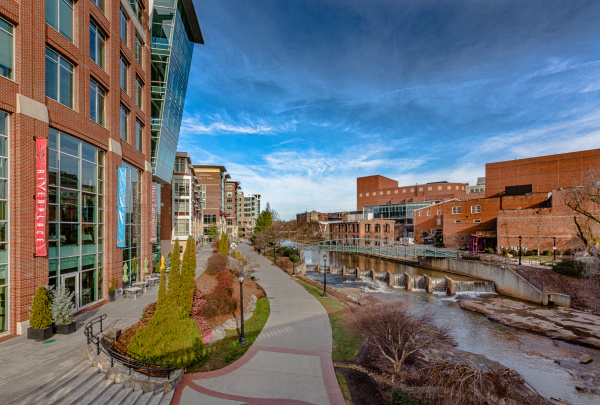
Photo by Derek Eckenroth
The city built RiverPlace across the river from the Peace Center in 2008. The red-brick complex houses offices, restaurants, retail shops, apartments and a Hampton Inn and Suites. A wide sidewalk along Reedy River invites pedestrians to this engaging complex.
Swamp Rabbit Trail
The Swamp Rabbit Trail—officially opened in 2010—brought more outdoor recreation to Greenville as early as 2008. Twenty-two miles of track runs from Greenville to Travelers Rest, following an old railroad path along Reedy River. The trail passes through Falls Park, adding to the park’s existing draw.
Project ONE
Project ONE—another assortment of restaurants, retail and offices—opened in 2013. Its plaza welcomes pedestrians with outdoor seating and enchanting strings of lights. The plaza transports visitors to a European-like getaway within the city. The Aloft Hotel and renovated city parking garage further revitalized downtown Greenville in 2016.
Downtown Involvement of BJU Students
The revitalization of Greenville has influenced BJU students, especially within the past decade. Just ten minutes from campus, the downtown area offers diversions from the college routine. Students’ favorite picks from over 100 restaurants downtown include Spill the Beans, Maple Street Biscuit Co. and Le Petit Croissant. UP on the Roof, located at RiverPlace, provides a fancier dinner for a date or a girls’ night. Students also thrive on relaxing visits to Falls Park and the Swamp Rabbit Trail.
Students can also express their musicality downtown. The Peace Center appeals to students with special musical events. Some music majors audition to be substitute musicians for the Greenville Symphony Orchestra. For those who perform for fun, the streets and plazas are perfect places for busking. Students only have to buy a street performance permit to entertain pedestrians and earn a little cash.
Students also carry out the University’s mission by proclaiming Christ to the people of Greenville. Pedestrians enjoying the downtown atmosphere are a ready mission field. Through the Center for Global Opportunities, students can canvas and have Gospel-oriented conversations right in the University’s backyard. This direct evangelism prepares students to witness in their hometowns or wherever God leads them after college.
Future Revitalization
Unity Park
Soon 60 acres just west of downtown, previously a site of racial segregation, will become Unity Park. It will be “a park for everyone,” said Mayor Knox White, the revitalization’s leader since 1995. Fountains, playgrounds, open lawns and a gathering hall will bind together Greenville’s diverse and growing community. A pedestrian bridge over the river and a ten-story observation tower will also attract people to the park. Affordable residential areas at the park’s edge, along with offices and retail, will further unite the community.
River parks and restoration were proposed in 1907 but never happened. Now plans are becoming a reality. Demolition of the former Public Works campus on the site began May 2. Construction should begin at the end of this year, and the first phase should be completed in 2021.
The Museum and Gallery’s Role in Revitalizing Downtown Greenville
BJU might include its art collection in a suggested art and event center downtown. This project would develop land next to RiverPlace, providing valuable space for the community.
M&G needs a new home since its building closed for renovations in 2017. And the Greenville County Museum of Art could use a bigger location. Currently, it can display only five percent of its collection at a time. The new building would also host large conferences and events in a spacious glass-walled ballroom. Proposed designs also depict an attractive outdoor space for public gatherings.
This project would be completed in 2022.


